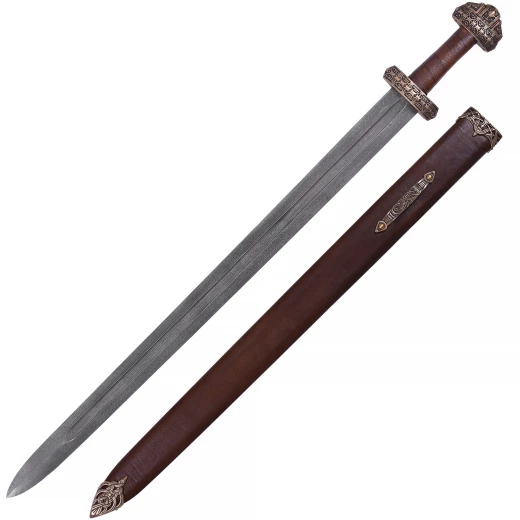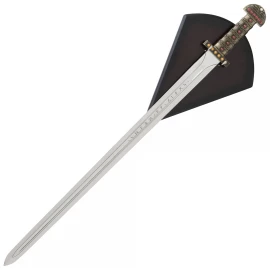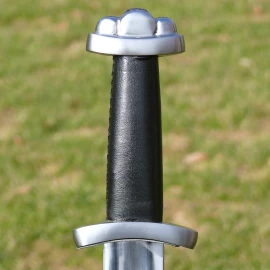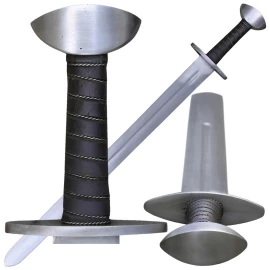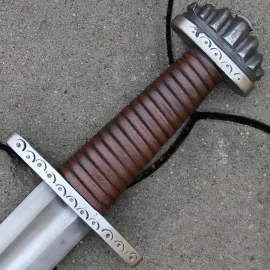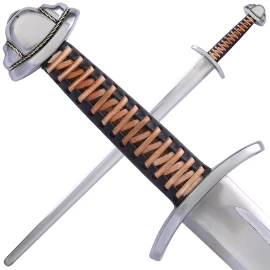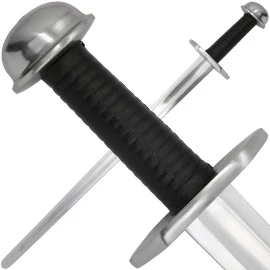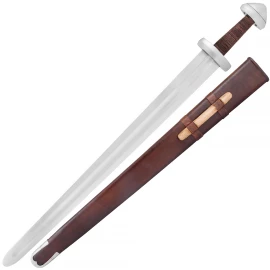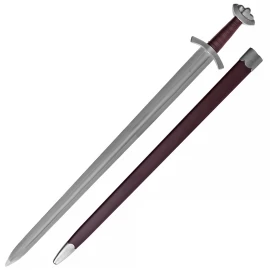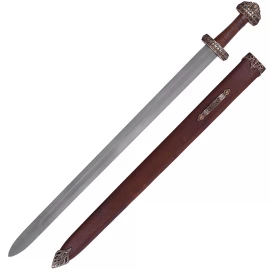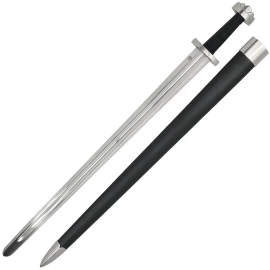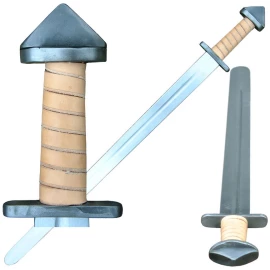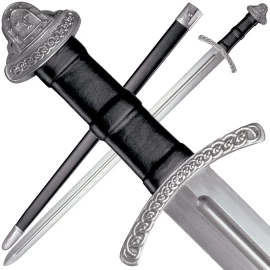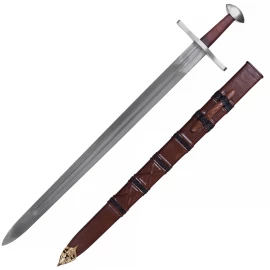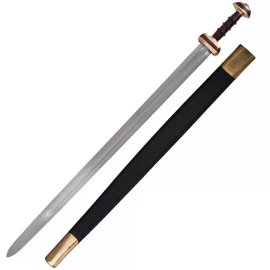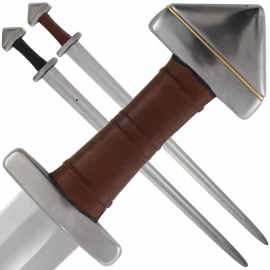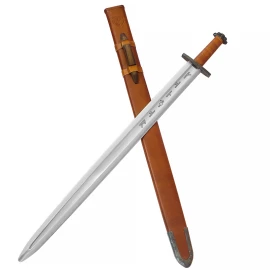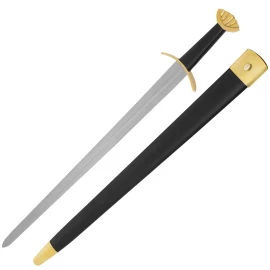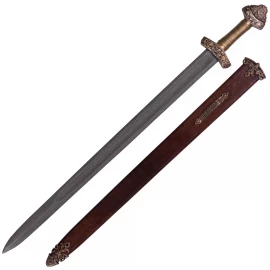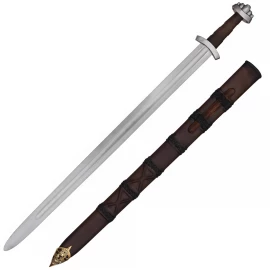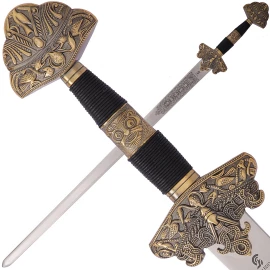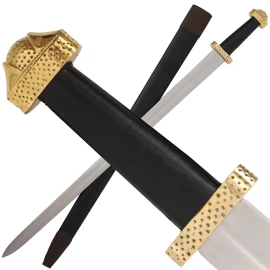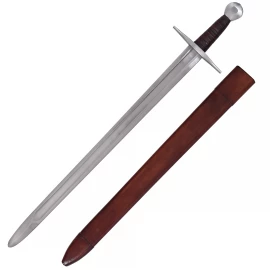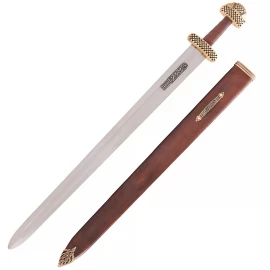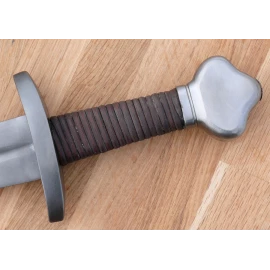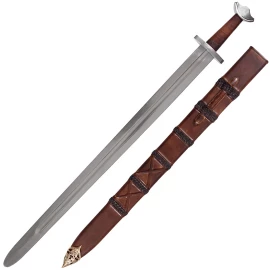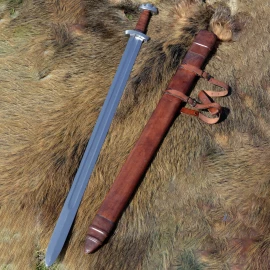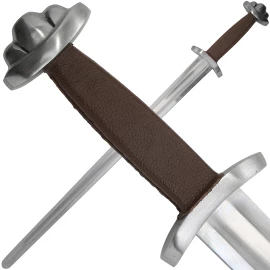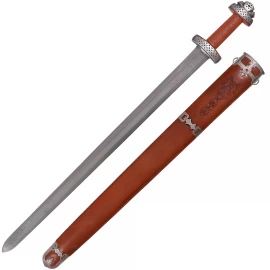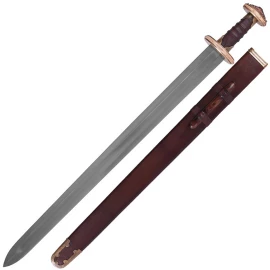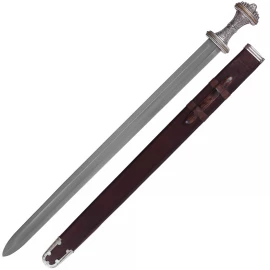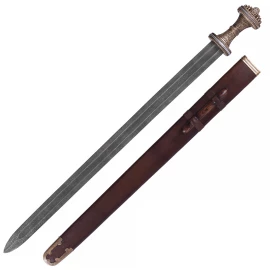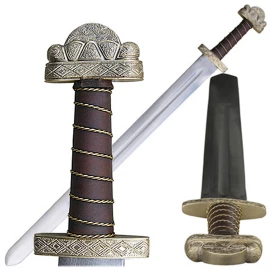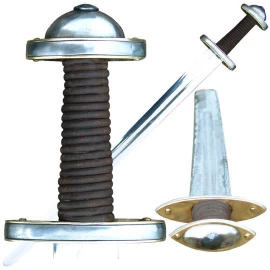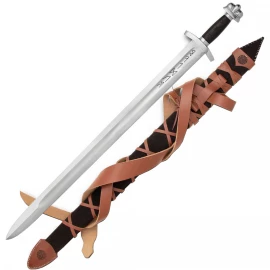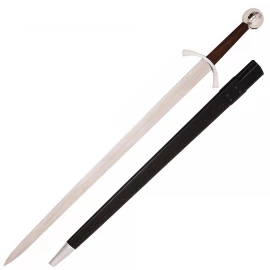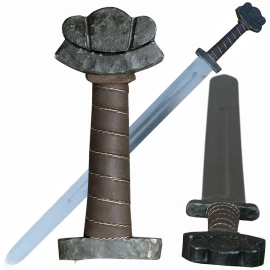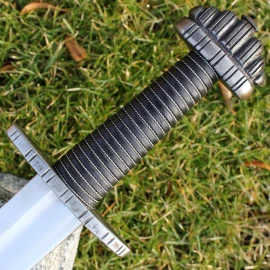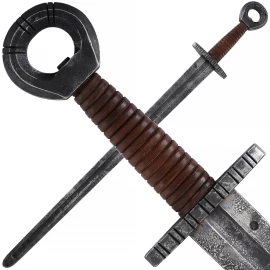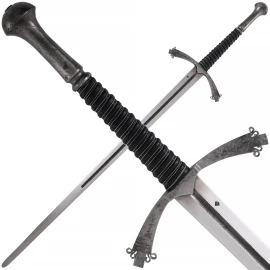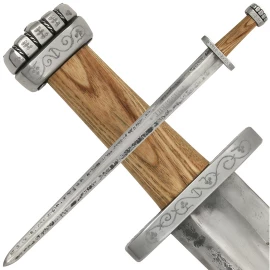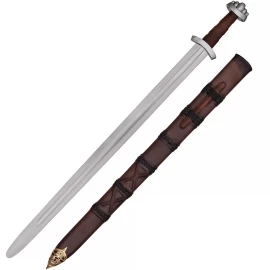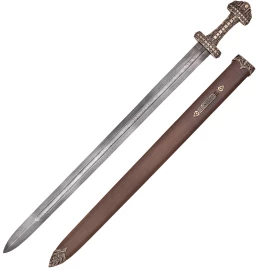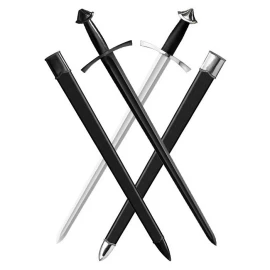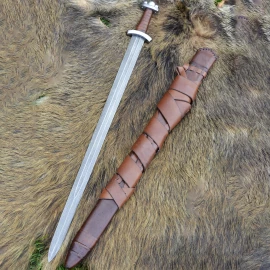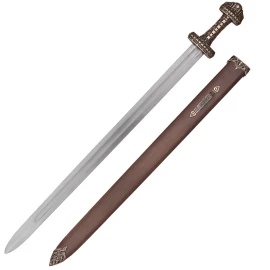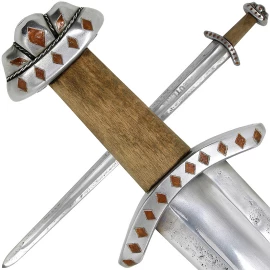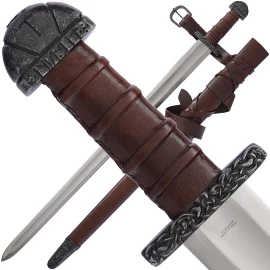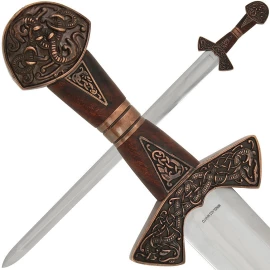Viking Sword (Isle of Eigg) with Leather Grip, Damascus Steel
This gorgeous Viking sword is based on a silver-inlaid bronze hilt excavated in 1830 on the Isle of Eigg, Inner Hebrides, Scotland. Although some blade parts were also found, these no longer survive. The original, beautifully detailed burial find is on display at the National Museum of Scotland in Edinburgh. Dated to the 9th or early 10th century, this finely crafted piece of Viking history is classified as a Type D according to Petersen's Viking sword typology. More information...
Notify me when the item is in stock.
We will inform you as soon as we stock up.
Viking Sword (Isle of Eigg) with Leather Grip, Damascus Steel
As the blade of the original archaeological piece is missing, a classic Norse shape was chosen for this reconstruction, and this single-handed sword features some of the typical characteristics of a traditional Dark Ages sword.
The straight, double-edged Damascus steel* blade has a broad fuller and unsharpened edges. The hilt, composed of a short, oval guard (approx. 10cm long and 2cm thick), a grip tightly overlaid with brown leather and a generously sized pommel, is cast from bronze. The guard and pommel are both richly decorated and closely recreate the highly detailed engraved motifs and patterns of the original artefact. Just like many historical examples of the time, the sword's pommel is a two-part construction. The blade's full tang is threaded to the lower, flat section, and the pommel cap is secured to the base with two rivets. The cap's beautiful detailing is accented by twisted copper wire inlays.
This early medieval one-handed sword comes complete with a brown wood-and-leather scabbard with antiqued and finely detailed bronze throat, chape and belt loop (max. belt width 6cm).
Please note that this sword is not a battle ready weapon. It is designed as a collector's or decoration/display piece and is not suited for combat reenactment. Besides its quality as a collectible, it is also perfectly suited as a prop, e.g. to complete your costume.
A regular version of this sword with EN45 spring steel blade is also available in our shop (Product No. 0116040800).
Specifications:
- Material: Damascus steel blade (high carbon steel, not stainless), bronze hilt with leather- wrapped grip and copper inlays
- Overall length: approx. 97cm
- Blade length: approx. 79cm
- Blade thickness: approx. 4mm (cutting edges approx. 1mm)
- Hilt length: approx. 18cm (grip approx. 10cm)
- Max. blade width: approx. 5cm
- Point of balance: approx. 12cm from the guard
- Incl. wooden scabbard with genuine leather cover and bronze fittings
- Weight without scabbard: approx. 1.70 kg
- Weight with scabbard: approx. 2.2 kg
Specs may slightly vary from piece to piece.
The steel used here is not rust-proof and might show slight surface tarnishing in places. We recommend you to maintain the blade and the scabbard on a regular basis, for example using Ballistol Universal Oil, which is ideally suited for steel care.
* The terms Damascus steel, damascene or pattern welded designate a compound steel forged out of two or more different types of steel. It is named after its birthplace, the Syrian city of Damascus, a former stronghold of the patterned steel production. As a common practice, a harder high carbon steel and a milder low carbon steel are repeatedly forge welded and folded together. The high carbon steel ensures a higher hardness, a better temperability and longer lasting edge retention, whereas the milder steel confers greater blade flexibility and tensile strength. This procedure, which arose in a time where steel qualities were often low and inconsistent, enables to combine the positive attributes of the various steel grades. Besides, the different shadings generated by the varying carbon content of the alternating layers engender strikingly beautiful patterns, such as the twisted motif called Torsion Damascus pattern or the Rose Damascus pattern. Undoubtedly, these unusual patterns partly explain why inherent magical properties were attributed to the Damascus steel blades of the Middle Ages.
We are here for you


